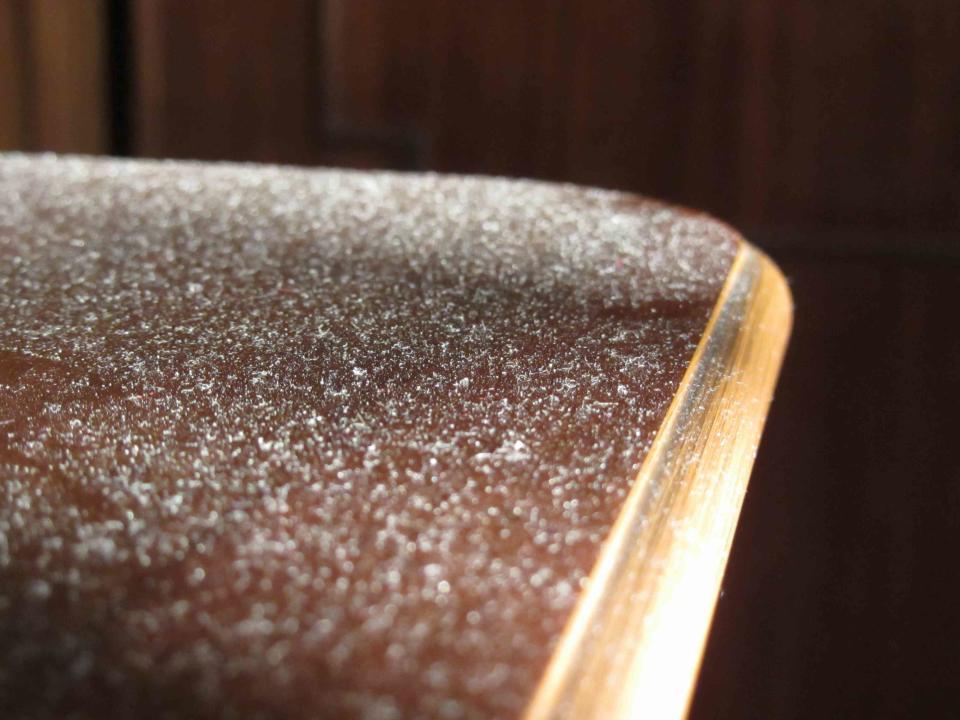Why Is My House So Dusty?
While cleaning more frequently could help, it’s not enough to keep the dust bunnies away completely.

LukeLuke68/Getty Images
Few tasks in life seem as futile as dusting your home. No matter how diligent you are with cleaning, dust will always return. Aside from it not being attractive in terms of interior design, dust can cause major problems for those with allergies and respiratory problems.
Where is all this dust coming from, anyway? “Dust can be comprised of various particles, such as skin cells, hairs, fibers, pollen, and other environmental materials,” says Marla Mock, President of Molly Maid, a Neighborly company.
While cleaning more frequently could help—no, that’s not a dig at your housekeeping routine—it’s not enough to keep the dust bunnies away completely. Let’s take a closer look at why your home is always dusty and what to do about it.
Meet The Expert
Marla Mock is President of Molly Maid, a Neighborly company
5 Reasons Your House Is Dusty All the Time
To clarify, you’re not completely off the hook with cleaning. While there are a variety of factors to consider in the battle against dust, we’ll start off by addressing the elephant in the room.
1. Infrequent Dusting
Unfortunately, that layer of dust will continue to accumulate until something is done about it.
Mock says weekly dusting is fine, provided you “get with the times” and ditch the feather duster for a damp microfiber cloth. “Microfiber removes up to 99 percent of bacteria on surfaces and can be used without spraying furniture polish,” she says. Just make sure the cloth is not too wet, otherwise you’ll leave streaks on surfaces.
When dusting a room, Mock says to work from top to bottom. This will cause all the dust particles to fall to the floor, so you can simply vacuum and/or mop them up. Always do your dusting before you clean the floors, unless you like making extra work for yourself.
2. Poor Airflow
Dust builds up more frequently in a home with poor air circulation. In addition to opening up windows to let in some fresh air, turn on ceiling fans—although you might want to dust the blades first to avoid further insult to injury. If you’ve got an HVAC system, dust the air vents or run a vacuum with the brush attachment over it so it’s not emitting dust particles into the air.
3. Outside Factors
When you come home, outdoor elements like pollen, dirt, and pollution have likely hitched a ride on your clothing and shoes.
“High-traffic areas of the home, such as entryways, tend to see an accumulation of dust quickly because it’s an area frequently accessed by people and pets who track in outdoor particles like dirt and pollen, which contribute to the faster buildup,” says Mock. A doormat can help remove some of the dust from your soles, but Mock recommends taking off shoes before entering to help deter dust.
Mock also recommends using air purifiers with HEPA filters to capture outdoor dust particles, especially if you have allergies or respiratory problems.
4. Drafty Windows and Doors
We usually discuss the downside of drafty homes in terms of energy efficiency (or lack thereof), but leaky windows and doors could also be contributing to your dust problem. “Check all the doors and windows in your home to make sure they are properly sealed,” Mock says. Otherwise, dust is literally slipping in through the cracks.
5. HVAC System Issues
The air filter in your HVAC system is an important line of defense against dust. Mock recommends swapping out HVAC filters every three to six months in pet-free homes. However, if you have pets or suffer from allergies or other respiratory distress, replace them every two months instead. If this is still not doing the trick, contact your HVAC professional to determine whether it’s time to clean out the air ducts.
Maintaining a (mostly) dust-free environment requires a multi-pronged approach. Weekly dusting is essential, but so is improving air flow, maintaining your HVAC system, and sealing drafty windows and doors. While a more attractive space is one of the perks, having less dust is more about creating a healthy household environment that won’t trigger allergies or respiratory problems.
Frequently Asked Questions
How often should I dust my home to reduce dust accumulation?
Dust weekly using a dry or damp microfiber cloth. Do it before you vacuum or mop the floors because that’s where the dust will fall as you clean.
Are there any specific measures I can take to reduce dust from carpets and furniture?
Vacuum carpets frequently and use the upholstery attachment on your vacuum to keep furniture free of dust, pet hair, and other household allergens. Use a vacuum with a HEPA filter that, per the US Environmental Protection Agency, removes 99.97 percent of dust and other airborne particles.
How often should I clean or replace my HVAC system’s air filters?
It will depend on the type of air filter it is, but Mock suggests every three to six months. If you have pets or allergies, switch to every two months instead. Contact your HVAC pro if even a clean air filter isn’t improving your dust situation.
For more Southern Living news, make sure to sign up for our newsletter!
Read the original article on Southern Living.

